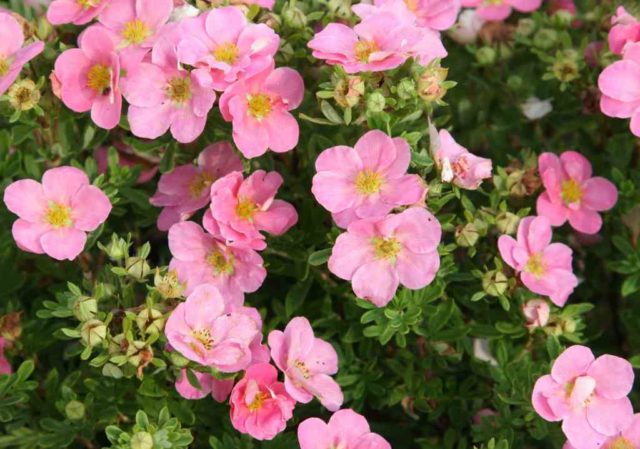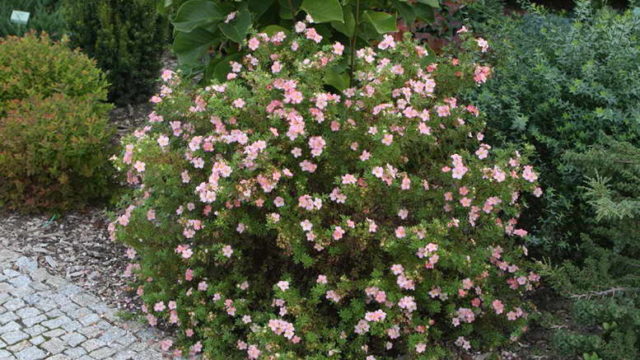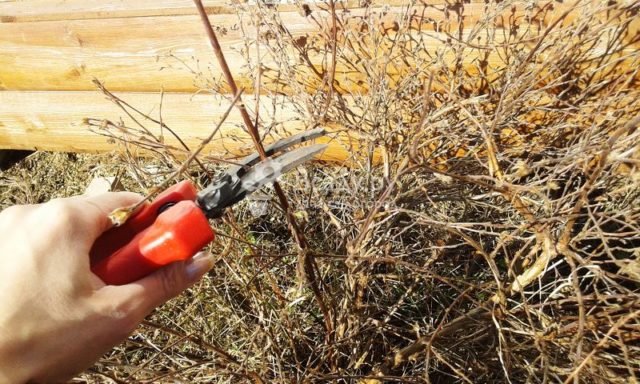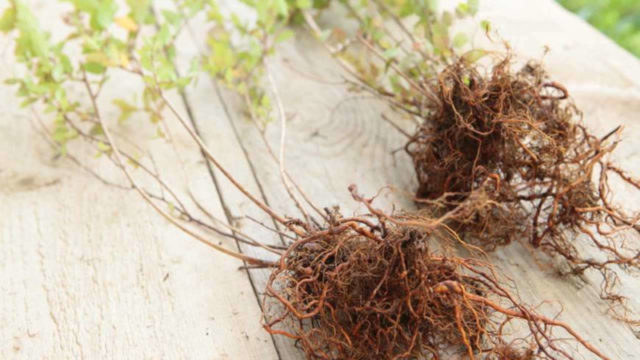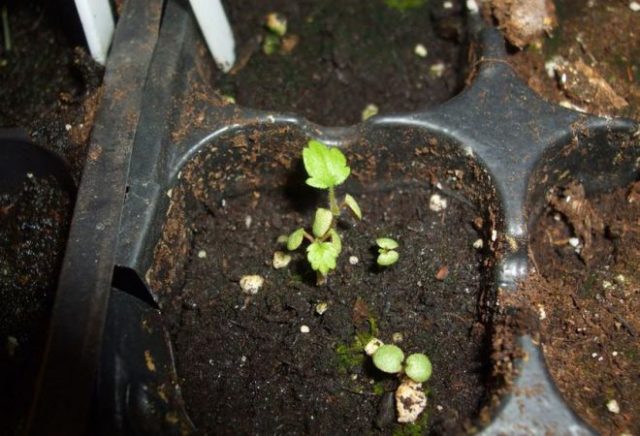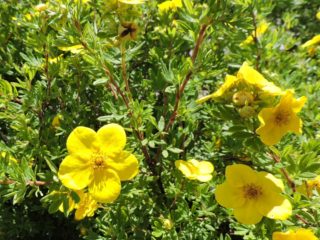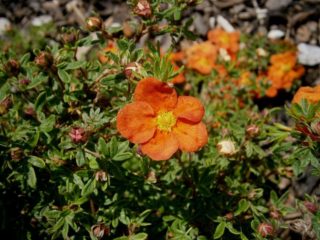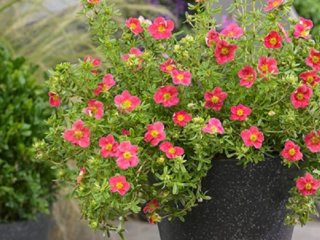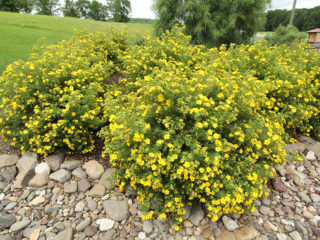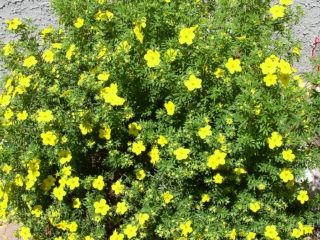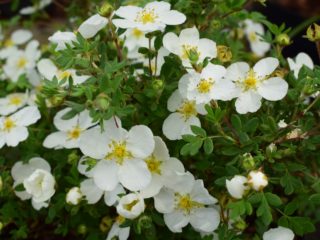Content
According to landscape designers and gardeners, the Pink Queen shrubby cinquefoil is best suited for decorating summer cottages and the surrounding areas of country houses. Lush bushes, abundantly strewn with buds of delicate pink shades, are an excellent decoration for any backyard, invariably attract attention and cannot leave anyone indifferent.
Description of Potentilla Pink Queen
The name of the cinquefoil variety Pink Queen, or Pink Princess, is translated as “Pink Queen”, “Pink Princess”. There are some other names for cinquefoil - five-leaf, dasiphora, Kuril tea, moguchka, whispering grass. The Latin name Potentilla means “strength”, “power”. And it testifies to beneficial healing properties, widely used in folk and scientific medicine.
The Pink Queen shrub comes from wild species and does not require special care. It successfully takes root both in the central part of the mainland and in the regions of the northern region.Medium-sized bushes with creeping branches reach a height of 0.5–1 m. With proper care, they annually add 10–15 cm of new shoots and are long-lived with a life expectancy of 20–30 years.
Cinquefoil Pink Queen stands out from other plants not only in its luxurious appearance, but also in its long flowering period. The first buds appear at the very beginning of summer and continue to delight the eye until the very first frost. The bushes have the appearance of a ball, thanks to the thick lush crown. The leaves of the plant are pinnate, hairy, and pointed in shape. At first they are green in color, then a silver tint is added to it. They grow no more than 3 cm in length and 1 cm in width. Each cinquefoil flower has 5 petals and 30 stamens, which give the appearance of a fluffy center. The buds reach 3.5 cm in diameter and look very delicate and fragile. The photo of Pink Queen cinquefoil conveys all the tenderness and beauty of this variety.
Cinquefoil Pink Queen in landscape design
Thanks to the interchangeability of flowers throughout the flowering period, Pink Queen shrubby cinquefoil has found wide use in the design and landscaping of garden plots. It can easily be included in any composition, creating a smooth transition between the color and shape of plants. With its help you can create low trimmed borders and design rocky gardens. The Pink Queen cinquefoil is good as a tapeworm against the background of lawn grass. In some cases, it can act as decoration for roofs, slopes, and alpine slides.
In park areas, single or group planting of Pink Queen cinquefoil is recommended in order to create a flowering undergrowth that does not require special care. Low hedges in the form of a border look beautiful.They are unpretentious, hold their shape for a long time and are well-cut, and in open spaces and sunny lawns they perform as excellent soloists.
Cinquefoil shrub Pink Queen has found application even in Chinese and Japanese gardens, participating in the formation of compact, neat geometric shapes and compositions. The combination of Pink Queen shrubby cinquefoil with wildflowers - lemon daylilies, white daisies and blue bells - looks great in a flowerbed. The decorative appearance of cinquefoil throughout the entire flowering period allows you to successfully include shrubs with delicate pink buds in autumn compositions, playing with the contrast of the foliage of other plants.
Planting and caring for Pink Queen shrubby cinquefoil
Cinquefoil is ubiquitous in nature and is considered an unpretentious plant that can grow in the most unfavorable conditions. Gardeners recommend planting seedlings in early autumn or spring after the night frosts have stopped. It is better to choose an open, sunny planting site.
Preparing the landing site
Planting and caring for Pink Queen cinquefoil is not particularly difficult: even novice gardeners can cope with the basic rules. Ornamental bushes are undemanding regarding the type of soil, but take root better in loose, fresh, moist substrates with good drainage. Before planting, the soil must be dug up and leveled.Slightly acidic soil with a small limestone content is best. High alkali content can cause leaves to turn yellow.
2 - 3 days before planting, dig a hole, the size of which should be 2 times the volume of the roots. It is better to use limestone gravel as drainage, which supplies calcium necessary for the growth of young seedlings. The pit is filled with a nutrient mixture obtained from the following components:
- humus – 1 part;
- leaf soil - 1 part;
- medium grain sand – ½ part;
- complex mineral fertilizing – 120 – 140 g.
After preparing the planting area, they begin planting Pink Queen shrubby cinquefoil.
Landing rules
Experienced gardeners pour seeds directly into prepared soil. For beginners and amateurs, it is better to first grow seedlings. For this, a wide box with holes is suitable, which is filled with a nutrient mixture consisting of equal parts of humus and peat. The soil is watered, the seeds are filled in and covered with a small layer of soil. The box is covered with a transparent plastic bag and left in a warm room at 16 - 18 degrees Celsius.
The seedlings are regularly watered and ventilated. Seedlings grow slowly. The strongest ones, on which 3 leaves have appeared, are planted separately in another container. With the onset of warmth, they can be transplanted into open soil.
The seedlings are placed in holes, carefully straightening the roots. The remaining free space is covered with earth, compacted tightly and avoiding the formation of air voids. The root collar of the plant should be flush with the soil surface. Only if this condition is met will the Pink Queen shrubby cinquefoil be able to take root safely. The distance between the holes should be at least 50 cm.After planting, the plants are watered, and the adjacent rounded area is mulched with straw, wood chips, and grass.
Potentilla seeds can be planted in open ground in the fall. In winter, they accumulate strength for rapid germination, and in spring the first leaves appear above the ground. They are also planted in the spring.
Watering and fertilizing
Cinquefoil Pink Queen can withstand slight drought conditions. But careful gardeners should monitor the level of soil moisture. When planting a seedling, the tree trunk circle is made below ground level. It will serve as a natural funnel for uniform watering. It is enough to water the cinquefoil bush once every 2 weeks with water, the temperature of which does not differ from the air temperature. It is recommended to pour 10–12 liters of water onto each bush. Young seedlings should be watered more often - 3 times a week.
Every week the soil is loosened to ensure the supply of oxygen. When performing such work, care should be taken not to damage the roots of the cinquefoil.
In autumn and spring, adding natural compost will help improve the soil structure. During the season, Pink Queen Kuril tea is fed 3–4 times. Regular fertilizing stimulates the flowering of cinquefoil. The following can be used as fertilizers:
- vermicompost extract;
- a mixture of ash and mullein;
- complex compositions for flowering plants.
Such preparations are quite effective, easy to use and accessible to every gardener.
Trimming
To give the cinquefoil bushes a beautiful shape, improve flowering and appearance, it is necessary to carry out regular spring pruning before the buds begin to actively grow. Between April and May, the branches of the bushes are shortened by half. If the shoots are long enough, you can trim 1/3 of the length.
Pink Queen cinquefoil tolerates pruning quite well and is therefore often used for decorative landscaping.
You can arrange the growth of cinquefoil bushes in the form of small trees. To do this, select several long straight branches, which are intertwined with each other, and the rest are cut off. Having retreated 40 cm from the soil level, remove all small branches and buds. The future crown is shortened, leaving shoots no more than 10 cm in length. This composition begins to bloom in the first year. In subsequent seasons, they get rid of root shoots and buds that appear on the branches at the base. The crown is finally formed in the spring.
Compact cinquefoils must undergo sanitary pruning and clearing of broken, dried and improperly growing branches. Bushes older than 7 years need to be rejuvenated. To do this, every year it is enough to cut out 1/3 of the old branches until the bush is completely renewed.
Preparing for winter
Despite the fact that Pink Queen cinquefoil is a frost-resistant crop, you should not abandon traditional methods of warming plants for winter. This is especially necessary for young seedlings, which without special preparation may die during their first wintering. Cinquefoil Pink Queen, growing in harsh climatic conditions, will also not be able to withstand changes in low temperatures on its own.
Young seedlings spud well and cover the lower bare branches with a layer of soil. The tree trunk circle is covered with humus or peat. After the preparatory work has been carried out, the cinquefoil can be covered with any protective material or spruce branches.The covering structure must have a sufficient level of air permeability so that the cinquefoil bush does not overheat during possible thaws or begins to rot due to lack of air.
In the middle zone and temperate climate, adult Pink Queen cinquefoil bushes can be left for the winter without additional shelter. It is enough to promptly clear the area of fallen leaves to prevent rotting processes.
Propagation of Pink Queen Potentilla
Cinquefoil can reproduce by seeds and in several other ways:
- Simplest - propagation by layering. In the spring, selected Pink Queen cinquefoil shoots are cut, the cut edge is leaned against the ground and sprinkled with soil. After their own roots appear, the cuttings are separated from the main plant and planted separately.
- Dividing bushes. Pink Queen cinquefoil bushes older than 4 years are suitable for this. The roots are washed well and cut into pieces, each of which should have 2–3 buds. After which the separated parts are planted in the ground, leaving the buds on top of the ground at a distance of about 30 cm. The cinquefoil will bloom 2 to 3 years after planting.
- Cuttings is another common way to get new green plants. From the end of June to July, young shoots are cut and placed under film or in a greenhouse. To create the necessary humidity, a shelter made from a jar or plastic bottle is suitable. After 2 weeks, new shoots will appear. They can be planted immediately or left for the winter until the next season. It is better to pick off the emerging buds so that the young Pink Queen cinquefoil retains its strength.
Diseases and pests
A description of the Pink Princess cinquefoil variety would be incomplete without mentioning its resistance not only to frost, but also to pests, as well as various diseases. In rare cases, Pink Queen cinquefoil may be affected by powdery mildew, which causes the plant to become covered with a white coating. Fungicidal agents will help in the fight against this fungal disease.
The appearance of yellow-violet spots indicates that the Pink Queen cinquefoil is affected by rust. But this disease does not cause significant harm. To help the cinquefoil resist various fungal diseases, you can carry out foliar treatment with boric acid or potassium permanganate.
Conclusion
Cinquefoil Pink Queen is a very beautiful, unpretentious plant with graceful pink buds that can become a real decoration for any garden plot. Immunity to various diseases and pests, as well as frost resistance and the ability to take root in any climatic conditions make this crop especially valuable for cultivation in the climatic conditions of Russia.
